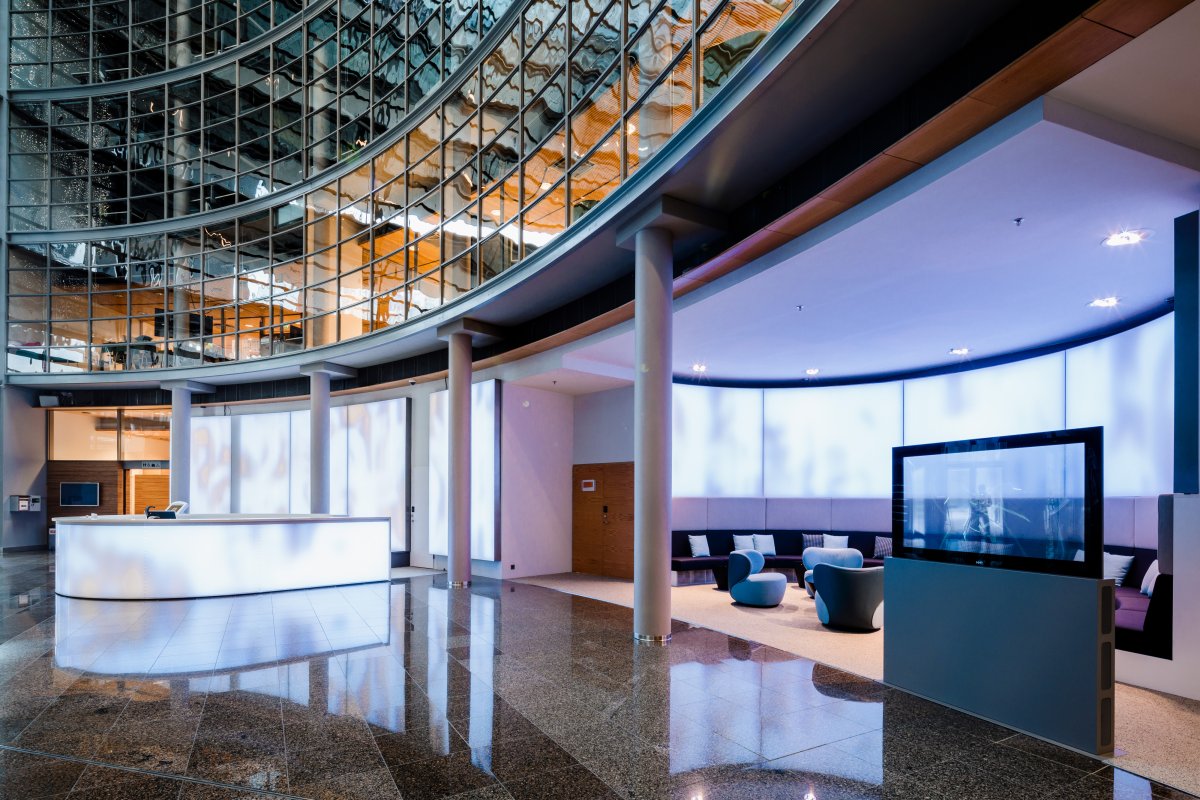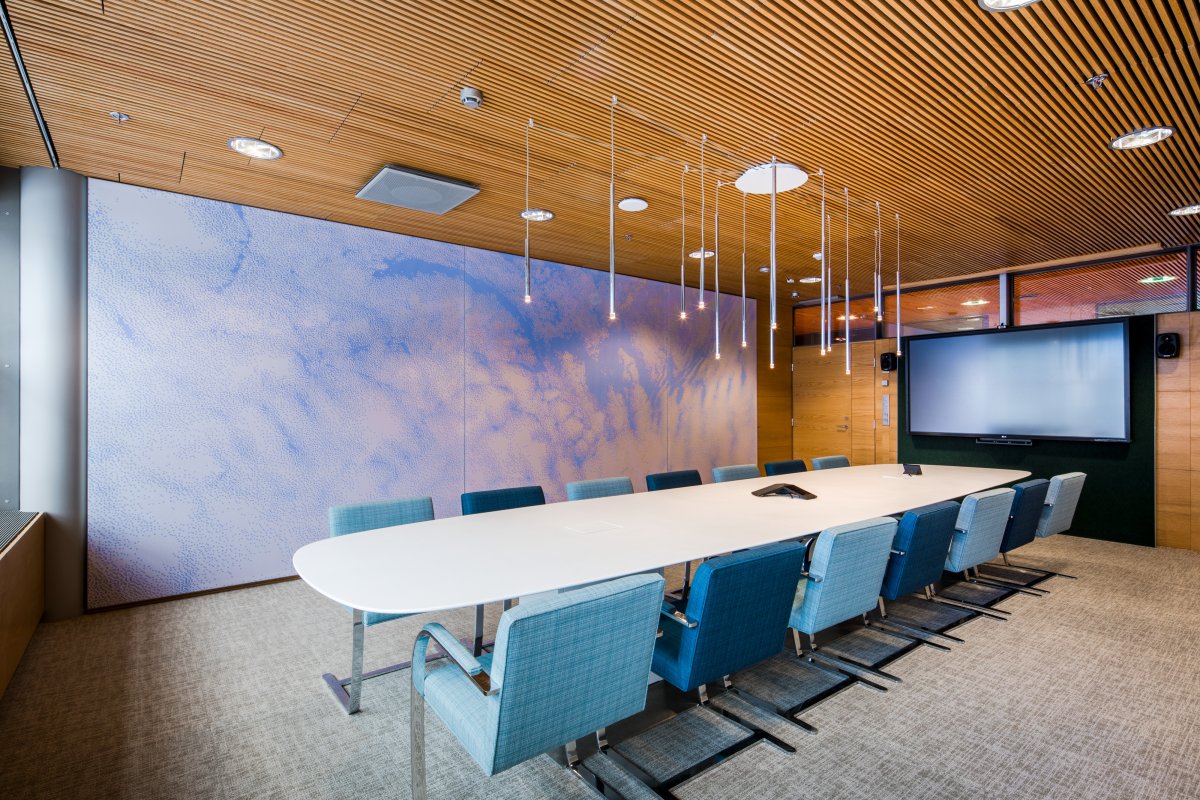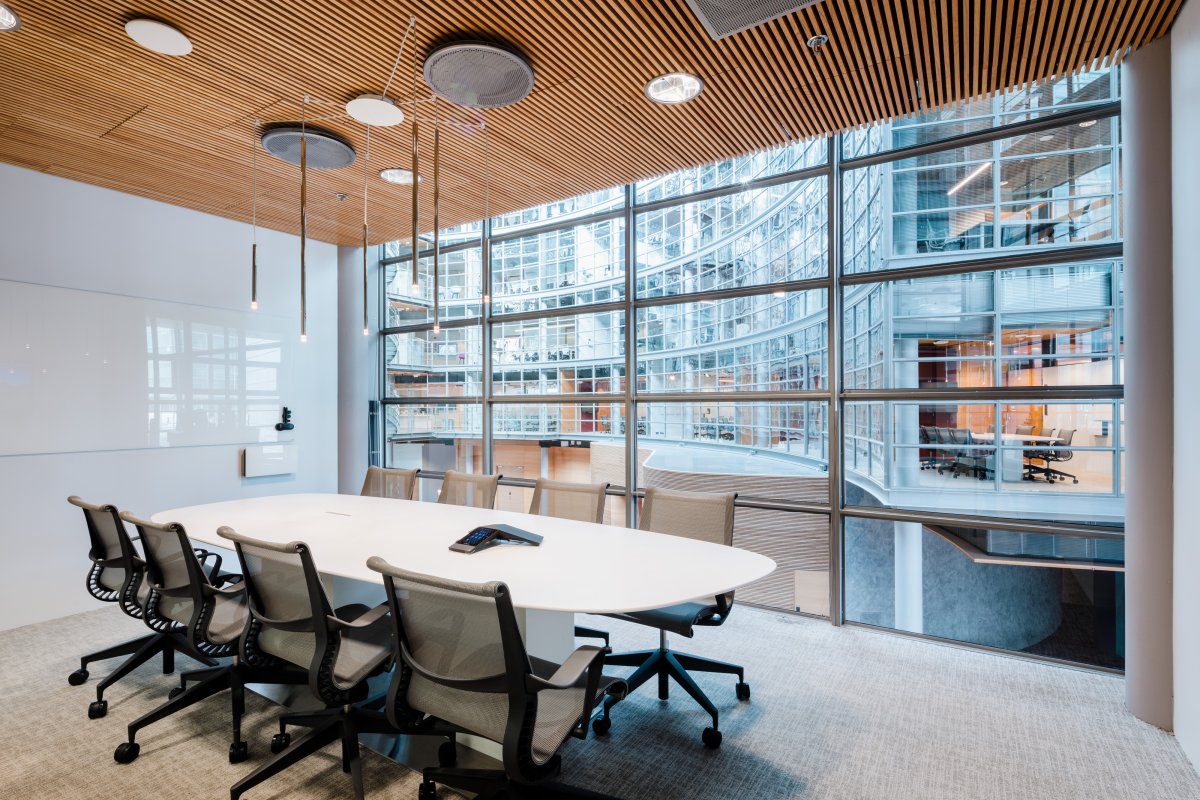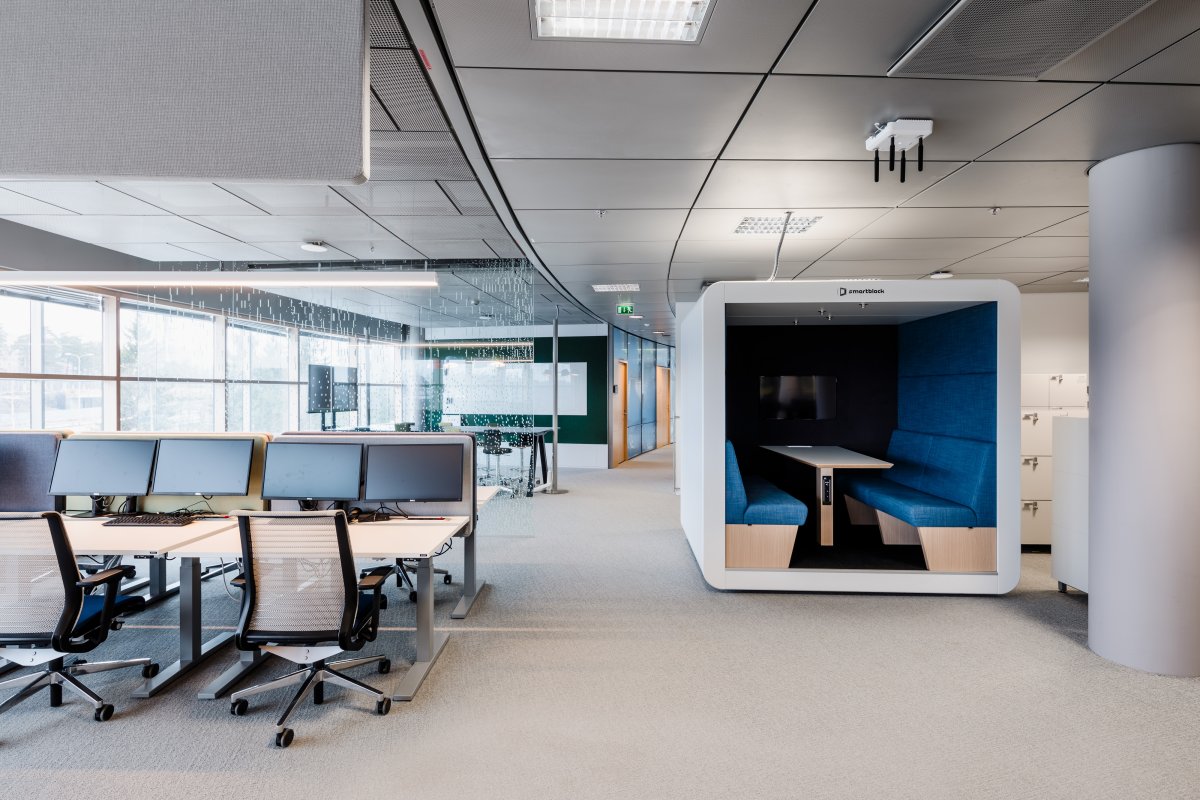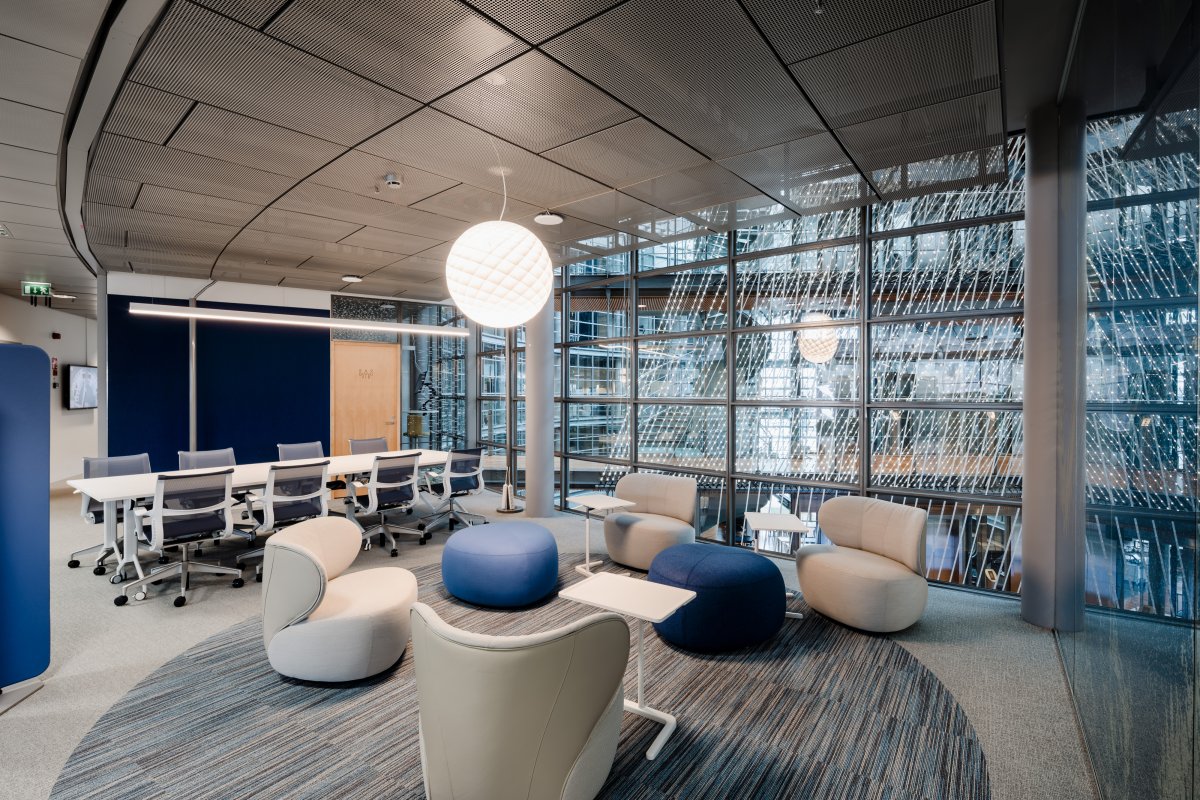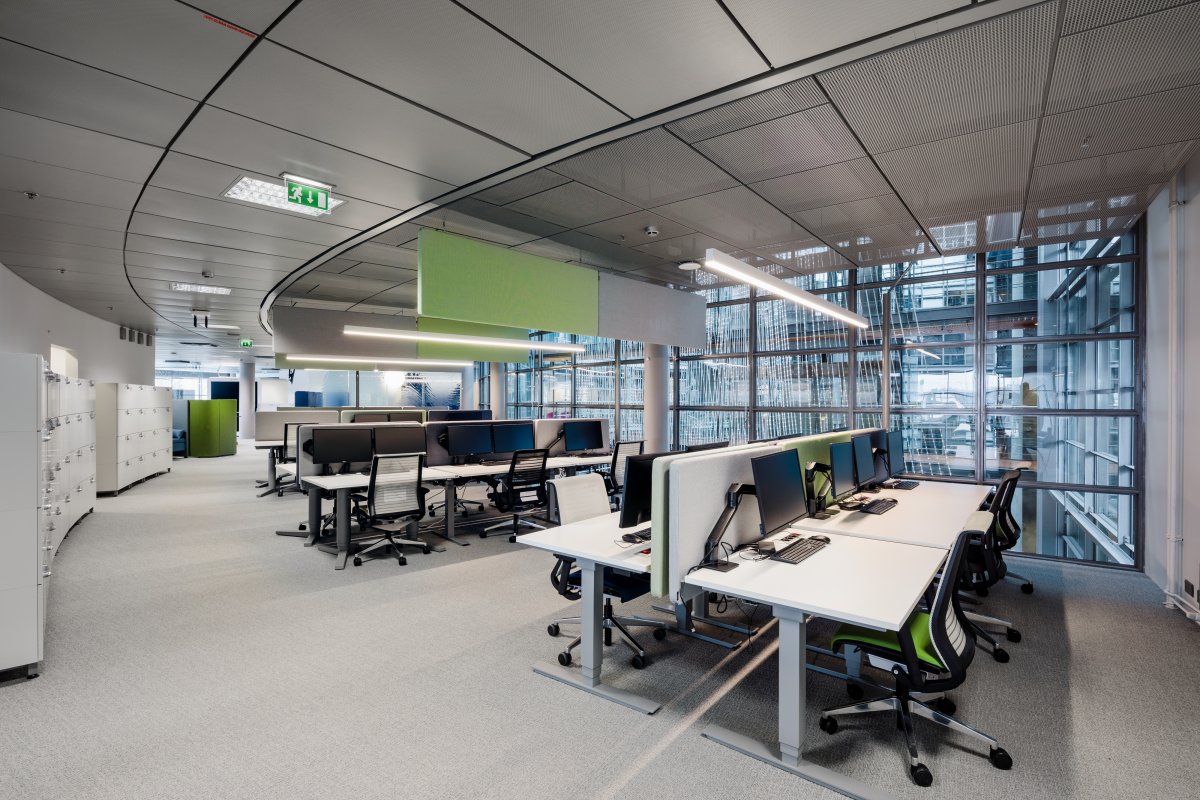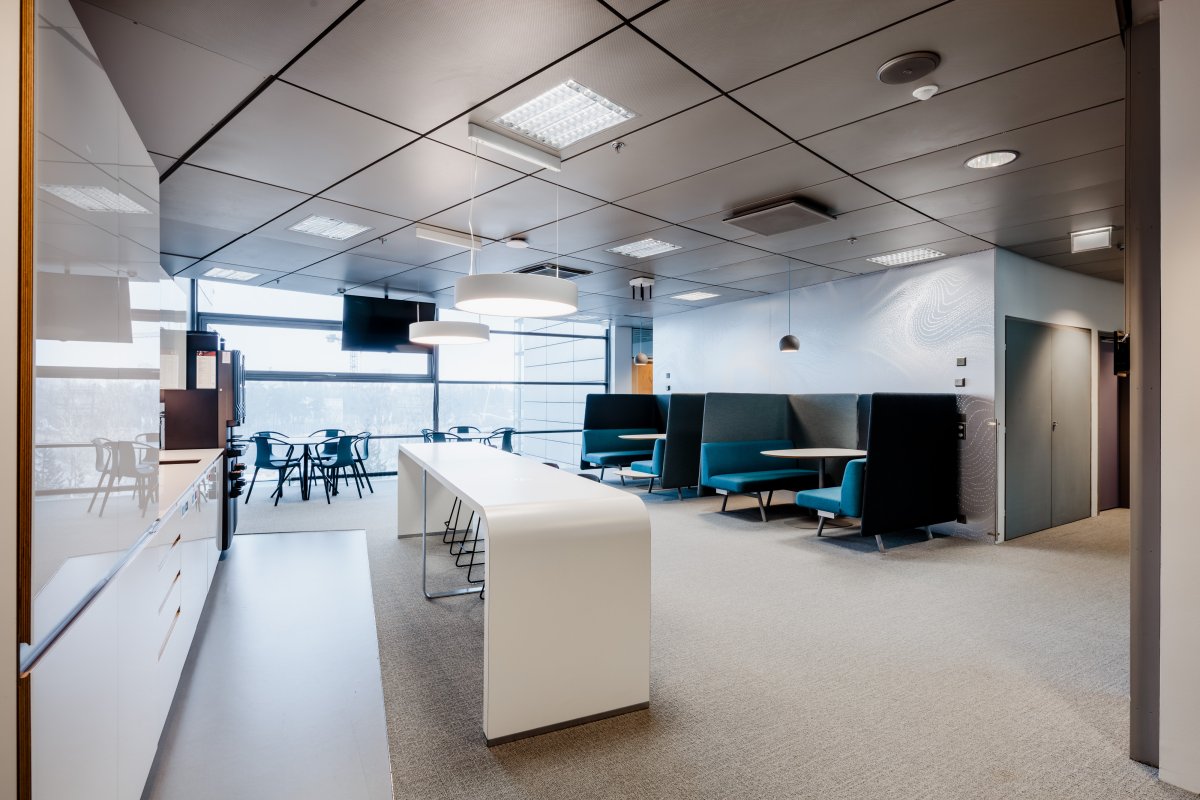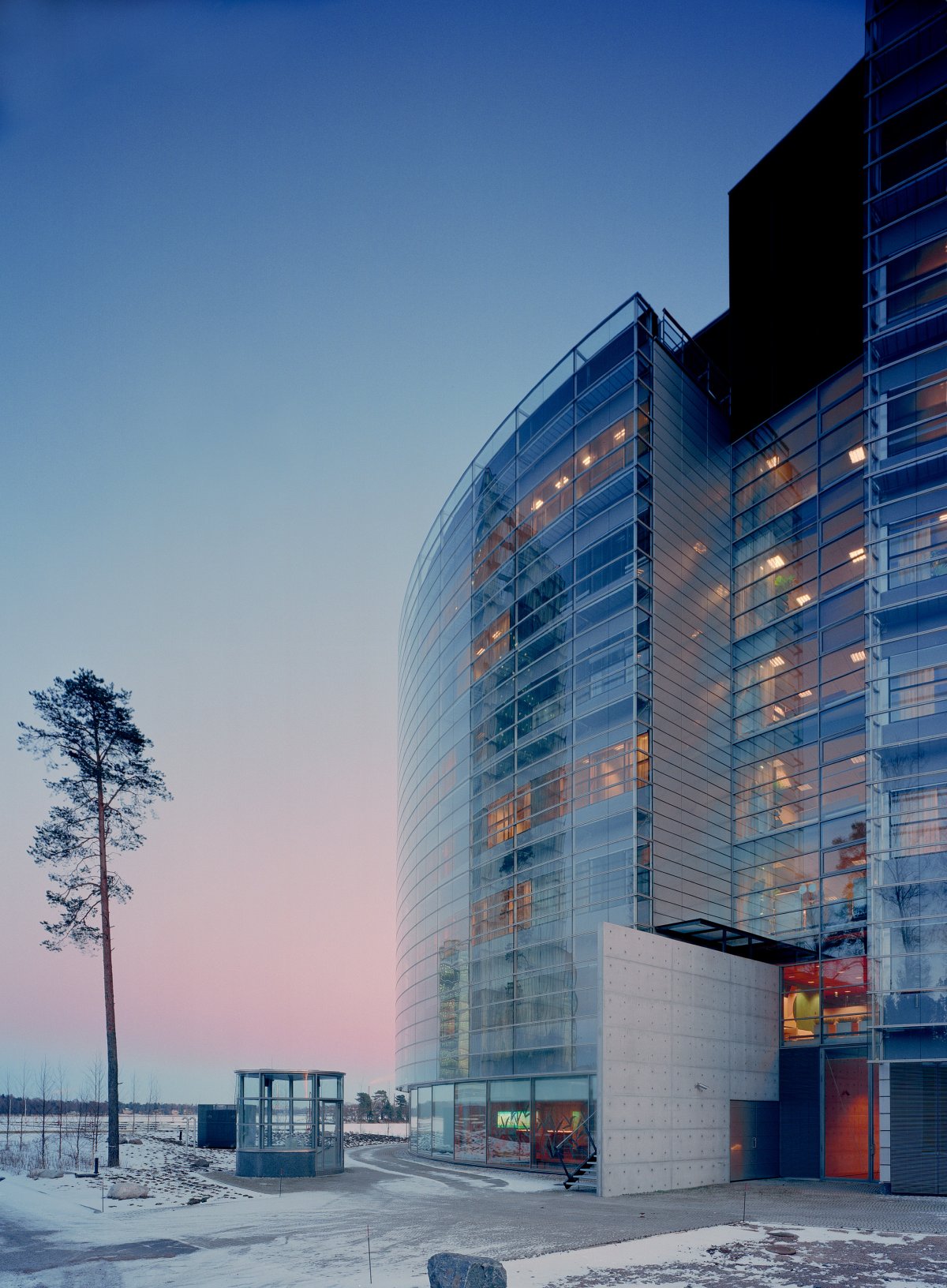The Tieto ICT company started operation in 1968 by the name of Tietotehdas Oy. At first it served mainly as the computer centre of its owners, but nowadays its target is to be the leading software and services company in the Nordic Countries. Retrofitted into the former Nokia House, the Tieto Campus with its cutting-edge solutions supports the target. Technology plays an essential part, because the company wants to use the properties of the spaces in telling about its supply of services and in offering possibilities for user experience. Seaside location adds to the attraction: the landscape is present in the building.
The building is a part of the former headquarters of Nokia, later occupied by Microsoft. In accordance with the principles of sustainable development, good original elements, such as batten ceilings of solid wood, have been preserved. At the same time the spaces have been given the specific Tieto identity.
The light artwork with 80 000 LED lights in the 30-metre-high atrium of the main lobby illustrates the data collected by Tieto and changes according to data flow. Besides offices, the eight-storey building contains conference and meeting rooms, working lounge for customers, project rooms, teamwork lounge, service centre, brain gym, fitness room, restaurant and various coffee hubs. The ground-floor lobby and restaurant as well as the first-floor meeting rooms and café are open to visitors, while the upper floors can be accessed by the personnel only. In all office floors, the workspaces have been arranged into areas meant for quiet concentration, teamwork, and communication and recharging. Special attention has been paid to acoustic solutions in open spaces.
The acoustics are good; no one, including the managing director, has a private office. The workstations in the multi-use office areas are all shared and suffice for 2 000 employees, although there are almost two users for each workstation. The employees choose a workspace according to the task at hand. There are 170 spaces for in-house negotiations, and only those for more than six persons can be booked in advance.
About six thousand sensors collect information on events occurring in the building, and employees can check on an application or screen in real time where they can find vacant workstations or meeting rooms. Most employees carry with them a tag, which informs each one’s location in the building, helping, for instance, in gathering a team for a particular task. Air quality and sound volume are measured by monitors. In this way, Tieto develops new forms of working by means of its smart spaces. The feedback from employees has been almost entirely positive: the spaces have been considered perfectly successful.

